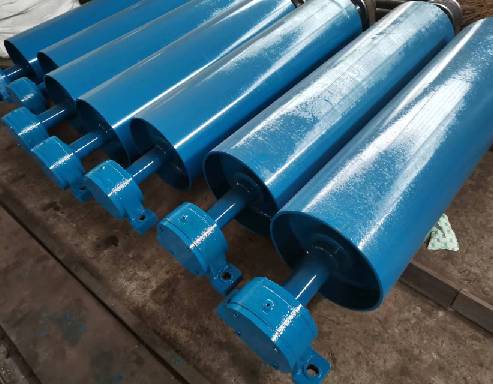 Afrikaans
Afrikaans  Albanian
Albanian  Amharic
Amharic  Arabic
Arabic  Armenian
Armenian  Azerbaijani
Azerbaijani  Basque
Basque  Belarusian
Belarusian  Bengali
Bengali  Bosnian
Bosnian  Bulgarian
Bulgarian  Catalan
Catalan  Cebuano
Cebuano  Corsican
Corsican  Croatian
Croatian  Czech
Czech  Danish
Danish  Dutch
Dutch  English
English  Esperanto
Esperanto  Estonian
Estonian  Finnish
Finnish  French
French  Frisian
Frisian  Galician
Galician  Georgian
Georgian  German
German  Greek
Greek  Gujarati
Gujarati  Haitian Creole
Haitian Creole  hausa
hausa  hawaiian
hawaiian  Hebrew
Hebrew  Hindi
Hindi  Miao
Miao  Hungarian
Hungarian  Icelandic
Icelandic  igbo
igbo  Indonesian
Indonesian  irish
irish  Italian
Italian  Japanese
Japanese  Javanese
Javanese  Kannada
Kannada  kazakh
kazakh  Khmer
Khmer  Rwandese
Rwandese  Korean
Korean  Kurdish
Kurdish  Kyrgyz
Kyrgyz  Lao
Lao  Latin
Latin  Latvian
Latvian  Lithuanian
Lithuanian  Luxembourgish
Luxembourgish  Macedonian
Macedonian  Malgashi
Malgashi  Malay
Malay  Malayalam
Malayalam  Maltese
Maltese  Maori
Maori  Marathi
Marathi  Mongolian
Mongolian  Myanmar
Myanmar  Nepali
Nepali  Norwegian
Norwegian  Norwegian
Norwegian  Occitan
Occitan  Pashto
Pashto  Persian
Persian  Polish
Polish  Portuguese
Portuguese  Punjabi
Punjabi  Romanian
Romanian  Russian
Russian  Samoan
Samoan  Scottish Gaelic
Scottish Gaelic  Serbian
Serbian  Sesotho
Sesotho  Shona
Shona  Sindhi
Sindhi  Sinhala
Sinhala  Slovak
Slovak  Slovenian
Slovenian  Somali
Somali  Spanish
Spanish  Sundanese
Sundanese  Swahili
Swahili  Swedish
Swedish  Tagalog
Tagalog  Tajik
Tajik  Tamil
Tamil  Tatar
Tatar  Telugu
Telugu  Thai
Thai  Turkish
Turkish  Turkmen
Turkmen  Ukrainian
Ukrainian  Urdu
Urdu  Uighur
Uighur  Uzbek
Uzbek  Vietnamese
Vietnamese  Welsh
Welsh  Bantu
Bantu  Yiddish
Yiddish  Yoruba
Yoruba  Zulu
Zulu belt and pulley drive
Understanding Belt and Pulley Drive Systems
Belt and pulley drive systems are fundamental mechanical components widely used in various machinery and equipment. These systems play a crucial role in transferring power and motion efficiently from one location to another. With applications ranging from industrial machinery to household appliances, understanding how belt and pulley systems work is essential for both engineers and hobbyists alike.
Components of Belt and Pulley Systems
A basic belt and pulley system consists of two main components pulleys and belts. Pulleys are wheels with a grooved rim that guide the belt along its path. They can be classified into two categories driver pulleys (connected to the power source) and driven pulleys (connected to the machinery or load). The belt is usually made of flexible materials such as rubber or fabric, allowing it to grip the pulleys securely.
The configuration of the system can vary. In a simple setup, a single belt connects two pulleys. However, more complex systems may involve multiple belts and pulleys, allowing the transmission of power to several different machine components simultaneously.
Working Principle
The operation of a belt and pulley drive system is relatively straightforward. When the driver pulley rotates, it turns the belt, which in turn rotates the driven pulley. The movement of the driver pulley causes the belt to stretch and move, which transmits the rotational motion to the driven pulley. This process effectively converts one form of mechanical energy into another, enabling machinery to function.
One of the critical elements that influence the efficiency of a belt and pulley system is the friction between the belt and the pulleys. Adequate tension must be maintained in the belt to ensure a proper grip on the pulleys. Insufficient tension can lead to slippage, while excessive tension can cause premature wear of the belt.
belt and pulley drive

Advantages of Belt and Pulley Drives
Belt and pulley systems offer several advantages over other power transmission methods, such as gear trains. First, these systems are relatively simple and cost-effective to produce and maintain. They can accommodate misalignment between shafts more effectively than gears, making installation and alignment easier.
Another significant advantage is their ability to handle shock loads. Because the belt can flex and stretch, it absorbs shock and vibrations, reducing stress on machine components. Additionally, belts can be designed to dampen noise, which is beneficial in applications where quiet operation is desired.
Belt and pulley systems also allow for the transfer of power across a greater distance compared to other methods. This feature is particularly advantageous in large machines where components are spaced far apart.
Applications
Belt and pulley drives are ubiquitous in various industries. In automotive applications, they are used to drive auxiliary components such as alternators and water pumps. In manufacturing, they can be found in conveyor systems that transport materials between different production stages. Moreover, in home appliances, these systems can be seen in devices like washing machines and food processors.
Conclusion
In summary, the belt and pulley drive system is an essential mechanical mechanism that provides an efficient means of power transmission in diverse applications. Its simplicity, cost-effectiveness, and ability to accommodate misalignments make it a preferred choice in many settings. As technology advances, the design and materials used in belt and pulley systems continue to evolve, enhancing their performance and reliability. Whether you're a professional engineer or an enthusiastic DIYer, a solid understanding of belt and pulley systems can greatly expand your capabilities in mechanical design and maintenance.
-
Revolutionizing Conveyor Reliability with Advanced Rubber Lagging PulleysNewsJul.22,2025
-
Powering Precision and Durability with Expert Manufacturers of Conveyor ComponentsNewsJul.22,2025
-
Optimizing Conveyor Systems with Advanced Conveyor AccessoriesNewsJul.22,2025
-
Maximize Conveyor Efficiency with Quality Conveyor Idler PulleysNewsJul.22,2025
-
Future-Proof Your Conveyor System with High-Performance Polyurethane RollerNewsJul.22,2025
-
Driving Efficiency Forward with Quality Idlers and RollersNewsJul.22,2025





























